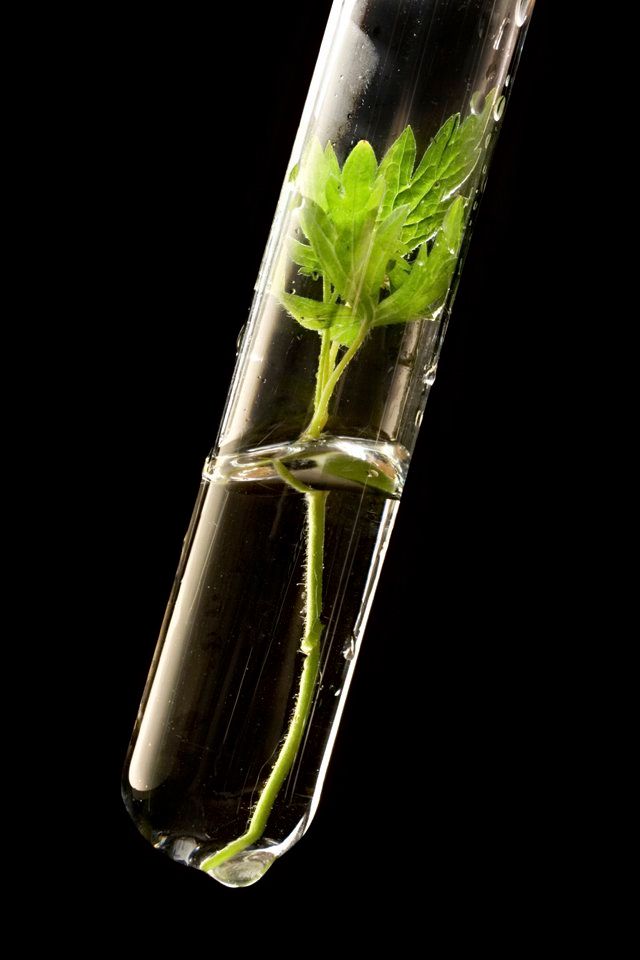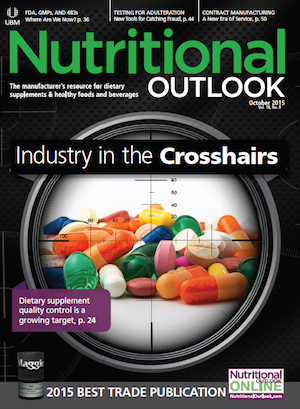The Latest Testing Techniques for Catching Dietary Supplement Fraud and Adulteration
Testing techniques such as UHPLC, HRAM-MS, and NMR provide complementary information to uncover adulteration.

Adulteration is the sizzling topic of the supplement world, one that is always on the mind of manufacturers, consumers, and regulators. Adulteration of food and dietary supplements is a criminal offense, most often resulting when unscrupulous suppliers under economic pressure start skirting regulations. Unfortunately, the history of food in commerce is sprinkled with incidents of adulteration, and the consequences for brands can range from expensive recalls to bankrupting lawsuits. In fact, government agencies in the UK and Denmark have formed crime units specifically designated to address criminal food and dietary supplement adulteration and fraud.
The key to predict when and how adulteration will happen is recognizing economic pressures and understanding how ingredients’ specifications are corroborated. Ingredients in high demand are at risk for adulteration. If that factor is combined with a low supply and/or a high price, the risk is even greater. Once one identifies a risk, one needs to determine how the adulteration may transpire. The key aspect here is to examine the ingredient’s specifications and critically assess how these may be exploited.
Case Study: The Challenges of Finding Adulterants in Chondroitin Sulfate
With this knowledge in hand, let’s evaluate the ingredient chondroitin sulfate (CS) as an example. CS, along with glucosamine, is a common ingredient in dietary supplements designed to promote healthy joints and sometimes to support osteoarthritis treatment. Chondroitin sulfate exhibits some of the hallmark economic pressures that make it a prime candidate for adulteration: it is in high demand and expensive.
CS is a large molecule composed of a chain of alternating sugars with a molecular weight distribution of between 40 kilodaltons (kDa) and 500 kDa (compare to a small molecule such as caffeine, which has a molecular weight of 0.194 kDa.) Two characteristics of CS stand out. First, it is polymeric, meaning that it comprises repeating units of small molecules-in this case, the chondroitin disaccharides. The second is that the molecular weight distribution is pretty broad. Both of these characteristics make conventional testing procedures such as high-performance liquid chromatography (HPLC), ultra-high-performance liquid chromatography (UHPLC), or high-performance thin-layer chromatography (HPTLC) difficult to use both in identifying the ingredient and in quantifying its purity.
The current and commonly used method for quantifying CS is cetylpyridinium chloride (CPC) titration. CPC reacts with CS to form a cloudy solution. The amount of CPC added is proportional to the quantity of CS. This would be an easy and inexpensive test if it weren’t for one key problem: CPC can react with other substances in the sample in the same way as it reacts with CS. This includes the cheaper, low-grade proteins and seaweed extracts that are commonly used as fraudulent substitutes for CS. Thus, CPC is not selective enough if there are adulterants or look-alike substitutions present. Whatever test method or combination of test methods is used, it must have the capability to not only accurately identify CS, but also to identify potential impurities that may interfere with the CPC titration.
Electrophoresis is a new technique in the dietary supplement testing world and has made its way into the USP monograph for impurity assessment of CS. This technique allows the lab the ability to screen for common adulterants or fraudulent substitutes of CS, such as cheaper, low-grade proteins; seaweed extracts (e.g., alginates, alginic acid polymer); and polyphosphates. Time will tell if the test is selective enough to detect other substances which may be used in the future as CS adulterants or substitutions.
New Technologies Essential for Identity Testing
In the case of CS adulteration, and really in all discoveries of adulteration, the art is in detecting the presence of an adulterant and identifying it. Present-day analytical chemists have a number of tools at their disposal for this purpose. For the dietary supplement manufacturing professional tasked with finding qualified labs to perform dietary supplement identity testing, please read on. These are the types of technologies you’ll want your lab to have and to know how to use.
- Ultra-high-performance liquid chromatography, or UHPLC, is a relatively new technique, extending the performance of traditional HPLC. It provides the ability to detect a greater number of substances.
- Another important and highly powerful tool when “hunting” for adulterants is high-resolution, accurate-mass mass spectrometry, or HRAM-MS. This instrumentation has the capability to accurately measure the mass of a substance to the third decimal place and beyond. For example, it could measure the mass of caffeine to 194.080 Da.
- The final tool, nuclear magnetic resonance (NMR) spectroscopy, possesses the ability to determine the relative position of atoms within a molecule, which helps reveal a substance’s chemical structure.
All three of these tools provide complementary information to uncover adulteration. UHPLC with ultraviolet (UV) absorbance detection provides many of the initial clues that adulteration may be present. If a chemist using UHPLC to verify a marker substance (e.g., flavonol glycosides in Ginkgo biloba) spots an unfamiliar peak appearing on the chromatogram, it is a sign that there is an unknown substance present that requires further investigation. UHPLC can be coupled with HRAM-MS to measure the mass of the unknown substance. Because the mass measurement of HRAM-MS is so incredibly accurate, it enables the analyst to obtain theoretical molecular formulas for the unknown substance and then search online databases such as ChemSpider and PubChem for potential matches. The potential matches can then be compared to the unknown substance to determine its identity.
It was this combination of techniques that led to the discovery of the methamphetamine-like compound N,alpha-Diethylphenylethylamine, or DEPEA, in an over-the-counter pre-workout product called Craze in 2014. After testing samples of Craze, we found that the ingredient, listed as N,N Diethylphenylethylamine on the label, did not correspond to its theoretical value. That provided a reason to investigate further.
My colleague Bastiaan Venhuis at the National Institute for Public Health and the Environment in the Netherlands and I narrowed the unknown substance down to two possibilities. The first was the substance listed on the label, which was allegedly a constituent of the dendrobium species (though no scientific research has been able to support this claim). The second was a substance called DEPEA, which is chemically similar to the substance listed on the label but with enough variation to pose significant harm to human health. Nuclear magnetic resonance, or NMR, was used to pin down the actual structure of the substance and confirmed that it was in fact DEPEA, the more harmful cousin to the ingredient listed on the label.
The combination of UHPLC and HRAM-MS is also used to identify many other drugs masquerading as supplements or botanical ingredients. Some of the untested and potentially harmful compounds NSF International has discovered this way include ingredients listed on the product label as botanical names such as geranium oil for DMAA, dendrobium extract for DEPEA, and pouchong tea extract for DMBA. This gives consumers the false impression that the ingredient is derived from plants and perfectly safe to ingest; in reality, these compounds are not well understood and have already caused harmful effects such as liver damage or further complicated cardiac events.
Even these techniques may not always provide the identity of the adulterant. It may be necessary to extract and isolate the unknown substance from the product and analyze it using NMR. There are two main types of NMR used: proton NMR (1H NMR) and carbon-13 NMR (13C NMR). The information obtained from these experiments allows the analyst to reveal the chemical structure of the substance. For the final confirmation of identity, the NMR spectra (both 1H NMR and 13C NMR) of the unknown substance can be compared to authentic chemical reference standards to find potential matches.
Some of these tools, while new to the supplement industry for quality-control testing, have been in play in other industries for several years. For example, natural product chemists and medicinal chemists are in general well practiced in the art of mass spectrometry and NMR. UHPLC has been commercially available since the mid-2000s. The Orbitrap mass spectrometer was also introduced in mid-2000, driving improvements in time-of-flight mass spectrometers (a competing line of HRAM-MS). Increasing competition and demand for more accurate instrumentation have brought mass spectrometers from the research labs into the production labs, allowing greater access to the tools that are now required to verify the safety and quality of dietary supplements.
What is important to remember is that the presence of potentially harmful adulterants, sometimes masquerading as botanicals or other ingredients, in over-the-counter dietary supplements is illegal. Their continued discovery in dietary supplements reveals a dangerous pattern that dietary supplement manufacturers should be aware of and, more importantly, know how to expose through the latest technology and testing. Fortunately, there are many organizations, including NSF International and the National Institute for Public Health and the Environment in Netherlands, committed to scientific and technical excellence that know how to apply this expertise to root out bad players and help companies protect the safety and quality of their supply chains.
John Travis is the senior research chemist for NSF International (Ann Arbor, MI).
Also read:
Which Are Emerging Adulterants in Sports Supplements?
Which Testing Technologies Are the Most Cost-Efficient for Your Dietary Supplement Company?
Dietary Supplement Testing: How to Detect “Dry Labbing”
New Chondroitin Adulterant on the Market
Testing Dietary Supplements in the Face of Unpredictable Microorganisms
Dietary Supplements: Botanical Testing

Prinova acquires Aplinova to further increase its footprint in Latin America
April 7th 2025Prinova has recently announced the acquisition of Brazilian ingredients distributor Aplinova, which is a provider of specialty ingredients for a range of market segments that include food, beverage, supplements, and personal care.
























